Here we present to you our list of 7 Magnificent Wild Canines, each of them keystone species. Not all the wonderful canines on earth have been domesticated. Many untamed species still roam the earth, often playing pivotal roles in their respective ecosystems. All are worthy of respect, as they play the roles that Nature designed them for. Yet some, perforce, stand out in our minds, as these awesome creatures do. We hope you enjoy the article.
Fennec Fox
Fennec Fox Facts
- The first entry on our list of 7 Magnificent Wild Canines is the beautiful, albeit rather tiny, Fennec Fox.
- This amazingly distinctive looking animal represents a small variety of fox that evolved as endemic to a moderately restricted, and rather harsh, environment.
- Its most distinctive feature remains its remarkable oversized ears. In addition to providing it with excellent hearing, these also serve as a means of dissipating heat.
- It also is the smallest known form of canid, the family that includes domestic dogs, coyotes, wolves, foxes, jackals, and related species.
- Sadly, the fur of this animal continues to remain highly prized by many Indigenous Peoples inhabiting its native range.
- The small mammal has also become rather popular as an exotic pet in some parts of the world – we do not condone such practices at Our Breathing Planet.
- Fortunately, its numbers in the wild remain stable. For this reason, the IUCN currently classifies it as a Species of Least Concern.
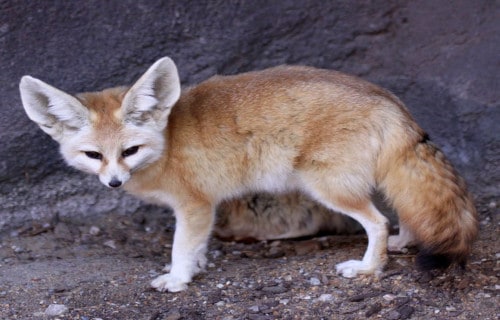
CCL: http://bit.ly/2xQPH8p
Fennec Fox Physical Description
Despite its rather fascinating nature, the Fennec Fox remains a diminutive mammal. Adults rarely attain a weight of more than 3.5 lb (1.6 kg).
Body length rarely exceeds 16 in (41cm). However, the tail often grows to a length of as much 8 in (20 cm) by itself, which is quite long compared to body length, among foxes.
The coat of this remarkable animal typically presents a blending of creamy tan and white. In addition, the fur has a rather fluffy nature, serving to help keep it warm at night.
Its eye-catching ears grow to the greatest length of any type of fox, relative to body size. These provide it with hearing so keen that it can often hear prey burrowing underground.
The soles of its rather tiny feet have thick pads of fur, which serve to protect its sensitive feet from the blistering heat of desert sands.
- Kingdom: Animalia
- Phylum: Chordata
- Class: Mammalia
- Order: Carnivora
- Family: Canidae
- Genus: Vulpes
- Species: V. zerda
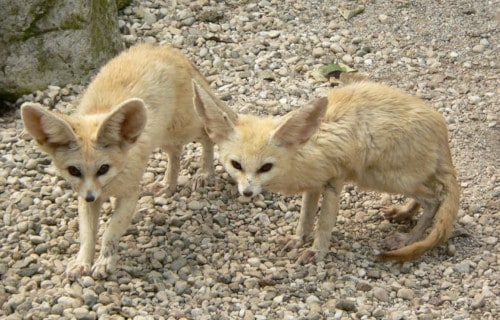
CCL: http://bit.ly/2xQPH8p
Fennec Fox Distribution, Habitat, and Ecology
The fabulous Fennec Fox inhabits portions of the Sahara in Africa, the Sinai Peninsula, in Asia, and also limited portions of Israel.
As a desert creature, this beautiful animal has a primarily nocturnal nature. It spends its days in its den, usually dug in the sand and located near patches of vegetation.
Its dens also remain highly organized, measuring as much as 1,291 sq ft (120 sq m), and often possess as many as 15 entrances and exits.
The Fennec Fox feeds as an omnivore. Its diet principally consists of insects, rodents, eggs, and occasionally rabbits. It typically hunts by pouncing on its prey, leaping from a stationary position.
Its own principal predator remains various types of owls. However, other animals also hunt it, including jackals and sometimes hyenas.
Tibetan Sand Fox
Tibetan Sand Fox Facts
- Next on our list of 7 Magnificent Wild Canines comes the extremely impressive and quite distinctive Tibetan Sand Fox.
- This remarkable canine evolved as a specialized carnivore. It has a skull that displays the most specialized shape for a carnivorous behavior of any known species of true fox.
- The fox inhabits an extensive, though comparatively harsh, territory range. The IUCN has listed it as a Species of Least Concern, due to the great extent of its range.
- This vulpine species has proven itself to be highly adaptable and has found numerous ways to thrive in its environment.
- Highly resourceful, it has developed a partial state of symbiosis with brown bears. The two species actually cooperate to hunt prey together.
Tibetan Sand Fox Physical Description
The Tibetan Sand Fox is rather small, compared to most foxes, with no appreciable degree of sexual dimorphism.
Adults average 28 in (70 cm) in total body length and about 12 lb (5.5 kg) in weight. In addition, the tail is usually about 16 in (40 cm) long.
The soft, dense fur is in random combinations of tan and gray. Also, the tip of the tail typically shows bright white.
The ears of this species remain rather short in comparison with other vulpines. Also, the forehead has a concave shape.
However, the most noteworthy characteristic remains the distinctively square-shaped face. So the photos above are not photoshopped after all!
- Kingdom: Animalia
- Phylum: Chordata
- Class: Mammalia
- Family: Canidae
- Genus: Vulpes
- Species: V. ferrilata
Tibetan Sand Fox Distribution, Habitat, and Ecology
The Tibetan Sand Fox roams an extensive, and restricted, range. The species evolved along the Tibetan Plateau and inhabits Tibet, China, Nepal, and Bhutan, in Asia. Yet this creature only inhabits altitudes between 11,500-17,100 ft (3,500-5,200 m).
The Tibetan Sand Fox also only likes arid or semi-arid grassland. Due to these restrictions, interactions with humans remain relatively infrequent – perhaps better for the fox!
The species also lives primarily solitary, and hunts by day. Individuals hunt often and prey mainly on pikas, yet also consume lizards, rodents, and small hares opportunistically.
As we briefly mentioned above, the animal also developed the habit of hunting jointly with brown bears. To the best of our knowledge, this trait remains unique among vulpines.
Bat Eared Fox
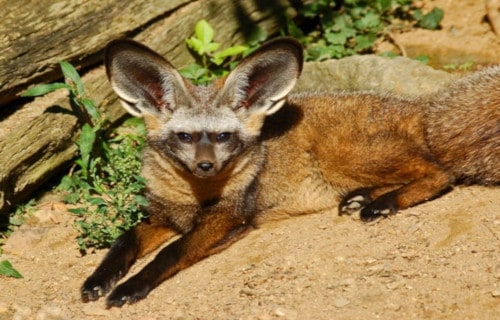
CCL: http://bit.ly/2IjEG4n
Bat Eared Fox Facts
- Placing third on our list of 7 Magnificent Wld Canines is the extremely unusual looking, but appropriately named, Bat Eared Fox.
- The fascinating looking mammal forms a species of wild canine endemic to a rather restricted range of the world.
- In addition, its distinctive name derives from its unusually large ears, among the largest in relation to its body size.
- Unlike other canines, this unique animal will also occasionally form polygynous pairings when mating.
- Fortunately, the IUCN currently lists this animal as one of Least Concern, due to sufficient numbers, despite its limited range.
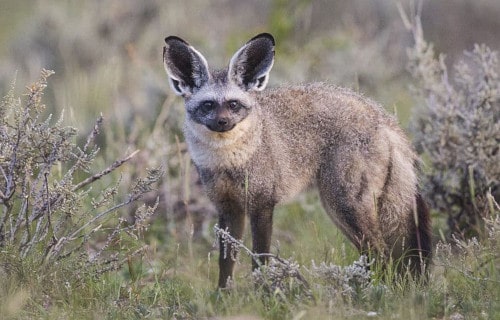
CCL: http://bit.ly/2IjEG4n
Bat Eared Fox Physical Description
First off, the fur of the fascinating Bat-Eared Fox predominantly appears brown and tawny in color in the majority of individuals.
Also, the distinctive markings of this unique animal typically include black legs, ears, and portions of its face.
In addition, the head and body length average around 21.6 in (55 cm), and the pronounced ears usually have a length of about 5.1 in (13 cm).
Its body has also evolved to require little fresh water, therefore the majority of its water intake is provided by the bodily moisture of its prey.
- Kingdom: Animalia
- Phylum: Chordata
- Class: Mammalia
- Order: Carnivora
- Family: Canidae
- Genus: Otocyon
- Species: O. megalotis
Bat Eared Fox Distribution, Habitat, and Ecology
The astonishing looking Bat-Eared Fox evolved as native to a broad range of the African savannas.
Sadly, though, currently, only two known population groups of Bat-Eared Fox still exist in Africa.
One of these is present in the southern regions including Angola, parts of Zambia, and South Africa. The other population group inhabits the region including Tanzania, Ethiopia, and also the southern portions of Sudan.
The canid also prefers to dwell in one of two types of habitat. One of these is the dry zones of the savanna, and another is short grasslands.
It also feeds principally as insectivorous in nature, and this is where the evolutionary trait of the over-sized ears comes into play.
In its native environment, excellent hearing is a must for locating and catching its often highly elusive prey.
Yet, when necessary, individuals have also been seen to on upon a wide variety of invertebrates. These include beetles, crickets, ants, millipedes, grasshoppers, moths, scorpions, and spiders.
Arctic Fox
Arctic Fox Facts
- The fourth entry on our list of 7 Magnificent Wild Canines is the adorable and highly resilient Arctic Fox.
- Firstly, this truly beautiful and amazing wild canine constitutes a small species of fox that evolved as native to the Arctic regions of the Northern Hemisphere.
- The species is also generally active from early September until early May. It tends to live and breed in complex underground tunnel systems. Further, after mating, the female may give birth to between 5-25 kits at once.
- Both sexes also share in the raising of the young. In a unique pattern, after the young have reached a certain age, the females leave the family to form their own groups.
- In addition, unlike most animals, the male remains to finish rearing the young.
Finally, this amazing creature also remains the only land mammal endemic to Iceland.
Arctic Fox Physical Description
The gorgeous Arctic Fox displays a moderate degree of sexual dimorphism – the males generally develop somewhat larger than the females.
An average body length between the two genders measures about 43 in (110 cm), plus an average tail length of 12.2 in (31 cm), also.
The animal also averages roughly 7.7 lbs. (3.5 kg) in weight, but exceptional individuals may weigh as much as 21 lbs. (9.4 kg)!
Its thick coat of fur changes color with the seasons to blend in with the environment – brown in the summer season and white during the winter.
- Kingdom: Animalia
- Phylum: Chordata
- Class: Mammalia
- Order: Carnivora
- Family: Canidae
- Genus: Vulpes
- Species: V. lagopus
Arctic Fox Distribution, Habitat, and Ecology
The Arctic Fox appears to remain quite common throughout the Arctic tundra biome, as well as other cold regions of the Northern Hemisphere.
Most notably, it commonly inhabits tundra habitats in Asia, Europe, and North America.
It has adapted to this environment by growing beautiful thick fur and a generous amount of body fat. The thick fur on its paws allows it to walk on the ice in pursuit of food without the loss of body heat.
It is also an opportunistic omnivore and will eat virtually anything. In addition to consuming any small prey it can catch, it will sometimes feed on berries, seaweed, and the occasional fish.
Finally, its own natural predators include golden eagles, red foxes, grizzly bears, and wolves.
Indian Wolf
Indian Wolf Facts
- Next on our list of 7 Magnificent Wild Canines comes the, in many ways, rather mysterious canine known as the Indian Wolf.
- For the moment, this remarkable creature is generally considered to be a subspecies of gray wolf. However, recent research indicates that it may represent an entirely separate species.
- Many experts in the field also believe that it is the specific species from which modern domesticated canines evolved.
- While the IUCN does not yet list it as an Endangered Species, it may be threatened. Estimates place its numbers at fewer at 3,000 extant individuals.
- The primary threat to its survival remains hunting, especially in India, even though it technically has protection as an Endangered Species in that country.
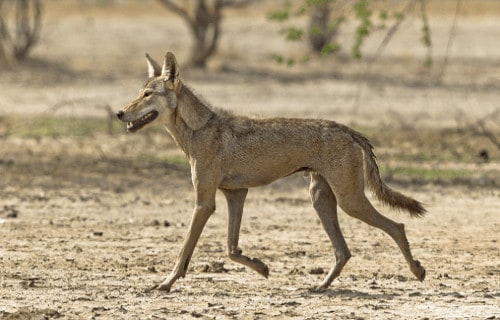
CCL: https://bit.ly/1rRyEZO
Indian Wolf Physical Description
The remarkable Indian Wolf ranks as one of the smallest known varieties of the wolf. Sexual dimorphism does present itself, but typically only in regards to weight. Males typically attain a weight of up to 60 lb (27 kg) while females rarely exceed 40 lb (18 kg).
Both genders reach an average height at the shoulder of roughly 32 in (81 cm). Meanwhile, an average body length equals about 5.2 ft (1.6 m).
The fur develops thick, with a coarse outer layer and a softer inner layer. Coloring usually consists of shades of grey with random flecks of black. However, individuals displaying such colors as brown, black, red, or even white do occur.
- Kingdom: Animalia
- Phylum: Chordata
- Class: Mammalia
- Order: Carnivora
- Family: Canidae
- Genus: Canis
- Species: Canis lupus pallipes
Indian Wolf Distribution, Habitat, and Ecology
While it once possessed a much greater range of distribution, today the Indian Wolf only exists in parts of Western Asia and the Indian subcontinent. This includes Israel, Iran, Turkey, Syria, Pakistan, and Afghanistan.
This remarkable creature usually inhabits regions of either grassland, scrubland, or semi-arid pastoral areas. Its greatest numbers appear in eight of the Indian states.
The wolf typically lives in small packs, usually including 6 – 8 individuals. However, only the alpha male and female reproduce. Litters commonly consist of 3 – 5 pups, with both parents caring for them until around 6 months of age.
As with other types of wolves, its diet remains entirely carnivorous. Prey includes smaller animals such s rabbits and rodents. Yet, larger prey such as antelope or wild boar will occasionally be hunted if smaller prey becomes scarce.
Dingo
Dingo Facts
- The sixth animal on our list of 7 Magnificent Wild Canines is the often, and quite unfairly, maligned mammal known as the Dingo.
- Firstly, the remarkable animal remains a surprising mystery to scientists. Its exact origins and classification still escape clarification. Currently, it falls under subspecies of the gray wolf.
- In its native region, the canid is the largest terrestrial predator. In fact, it is one of the leading apex predators within its range. This animal is generally viewed as a pest by owners of various livestock, though.
- Ironically, the greatest threat to the survival of the canines has nothing to do with habitat loss or environmental changes.
- Escaped domestic dogs have interbred with the Dingo so extensively that individuals of pure descent are becoming rarer with every passing year.
Dingo Physical Description
Most notably, the pure-blood Dingo possesses a distinctive appearance. The head is comparatively broad and the ears are mostly completely erect. In addition, the muzzle is quite elongated and the eyes may be either brown, orange, or yellow, varying between individuals.
The Dingo will also average about 24 in (60 cm) height at the shoulder. From nose to tail tip, it will be about 61 in (154 cm) in length and 44 lb (20 kg) in weight when adults.
The fur is also typically short, with a fluffy tail. Further, individuals most commonly display a reddish brown. Variations include white, light brown, tan, and black.
- Kingdom: Animalia
- Phylum: Chordata
- Class: Mammalia
- Order: Carnivora
- Family: Canidae
- Genus: Canis
- Species: C. lupus
Dingo Distribution, Habitat, and Ecology
The Dingo is a species of wild canine principally endemic to Australia and Southeast Asia.
The animal is also adaptable to a variety of habitats such as mostly forest edges, desert regions, and grasslands. Proximity to an adequate water supply is also a determining factor.
The Dingo commonly makes dens in hollow logs or deserted rabbit holes. It is primarily nocturnal in hotter times but in cooler seasons it becomes less so. The periods of activity are generally brief and tend to last less than one hour.
In the wild, the animal thankfully remains shy of humans. The species evolved as opportunistic in its dietary habits, consuming anything from carrion to insects to buffalo.
Red Wolf
Red Wolf Facts
- The last, but certainly not least, entry on our list of 7 Magnificent Wild Canines is the Red Wolf, and its promising story.
- This particular animal is the 6th rarest creature on earth and the rarest of all known wolves! The IUCN currently lists it as Critically Endangered.
- Shockingly, by the year 1980, only 20 individuals remained, all in captivity. As a result of a breeding program, it was subsequently reintroduced into the wild in North Carolina in 1987.
- Currently, roughly 200 individuals exist in captivity, while studies estimate its numbers in the wild to be slightly more than 100 individuals.
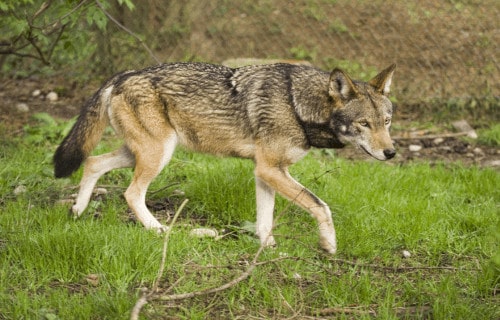
CCL: https://bit.ly/1ryPA8o
Red Wolf Physical Description
The Red Wolf is a moderate-sized wild canine, approximately midway between the coyote and the gray wolf, with no noticeable degree of sexual dimorphism present.
Also, adults average 53.5 – 63 in (136 – 160 cm) in length and weigh an average of between 50 – 85 lb (23 – 39 kg). Yet, exceptional individuals sometimes attain larger sizes roughly equal to that of the gray wolf.
The fur is typically a tawny to gray in color, with numerous shades. Also, white markings present themselves around the eyes and lips. Its legs develop longer and slimmer than most related species, and the ears also grow proportionately much larger as well.
- Kingdom: Animalia
- Phylum: Chordata
- Class: Mammalia
- Order: Carnivora
- Family: Canidae
- Genus: Canis
- Species: C. rufus
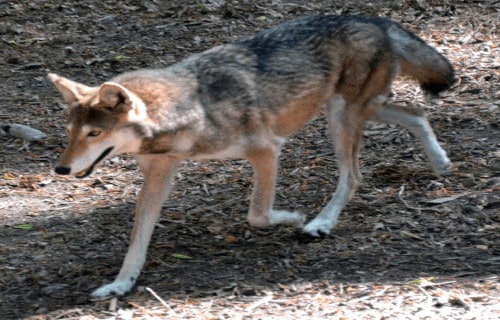
CCL: https://bit.ly/1jxQJMa
Red Wolf Distribution, Habitat, and Ecology
Evidence indicates that the range of the majestic Red Wolf once extended throughout what now forms the entire southeastern United States. This extended from Pennsylvania to Texas.
Due to conservation efforts and reintroduction efforts following its near extinction, its range currently covers five counties and 1.7 million acres (687,965 hectares) in various parts of North Carolina.
Since its historical distribution included a wide range of habitat types, experts assume it was a highly adaptable animal. The last known natural populations inhabited areas of swamps, prairie marshes, and even agricultural fields.
The Red Wolf is an apex predator within its endemic range. As a carnivore, its diet includes smaller prey such as rabbits, raccoons, and rodents, but occasionally also larger prey such as deer.
We sincerely hope that you have enjoyed this listing of 7 Magnificent Wild Canines. Please remember, if you encounter one of these incredible creatures in the wild, to respect their place in Nature. Each plays an important role in the local ecosystems, and without them, that system fails. It is up to us to protect and preserve them.
Check out our other articles on 6 Extremely Localized Invertebrates, North American Gulches and Canyons, 7 Breathtaking Beaches of the World
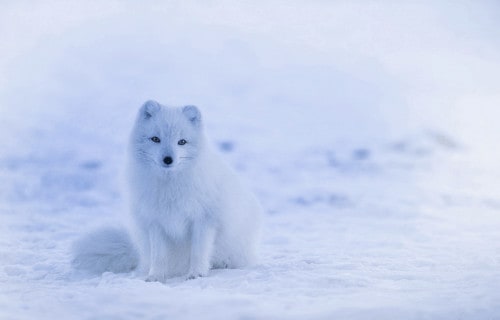
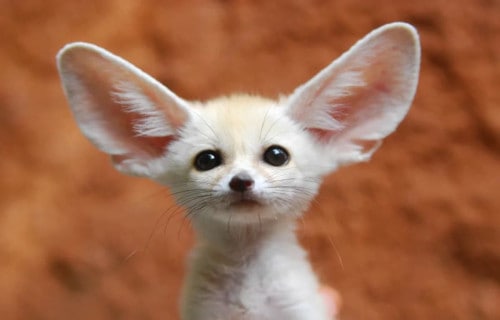
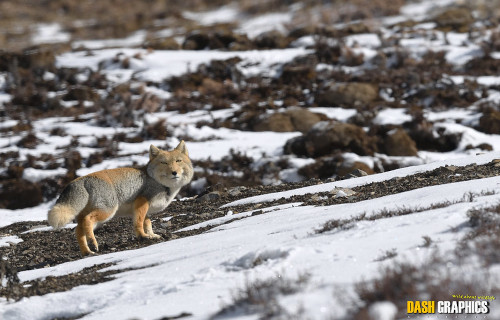
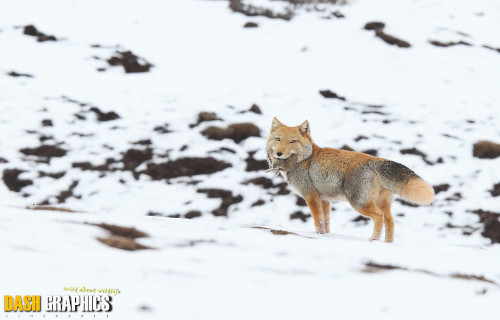

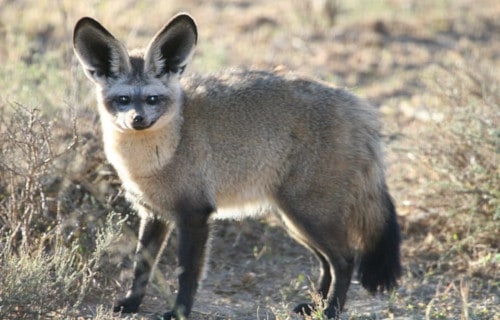
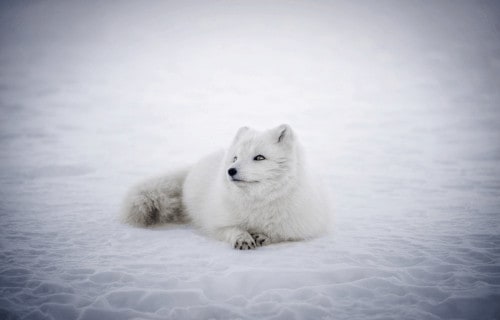


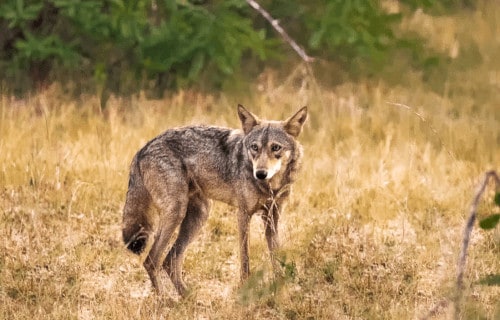
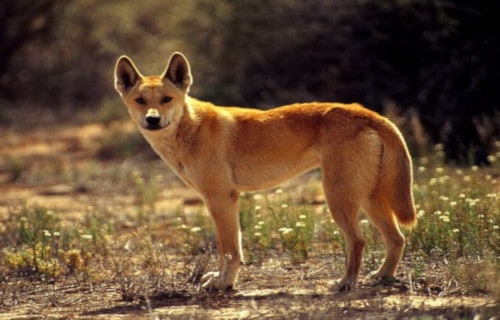
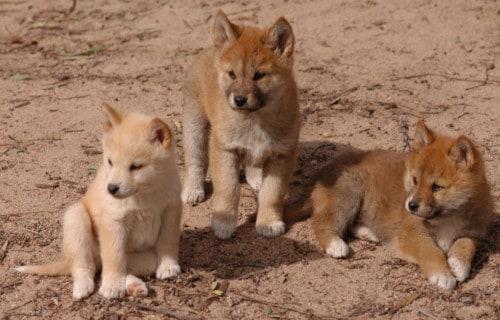
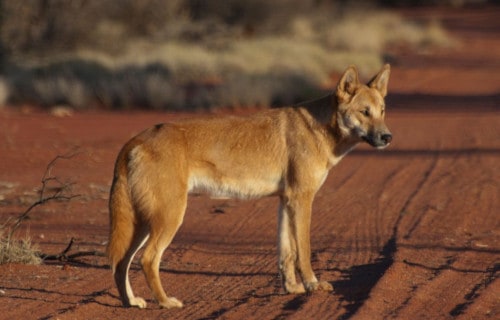
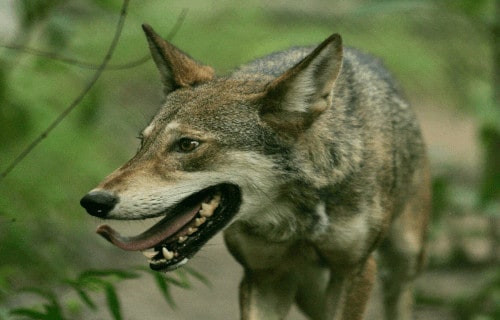









Leave a Reply